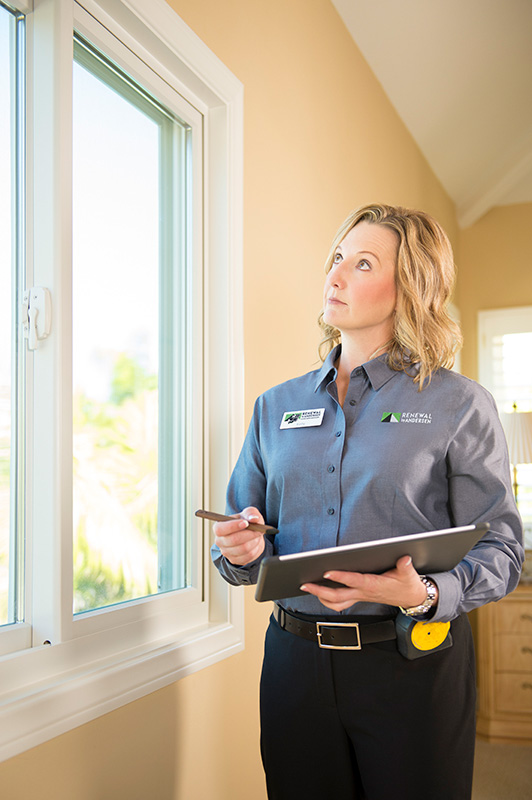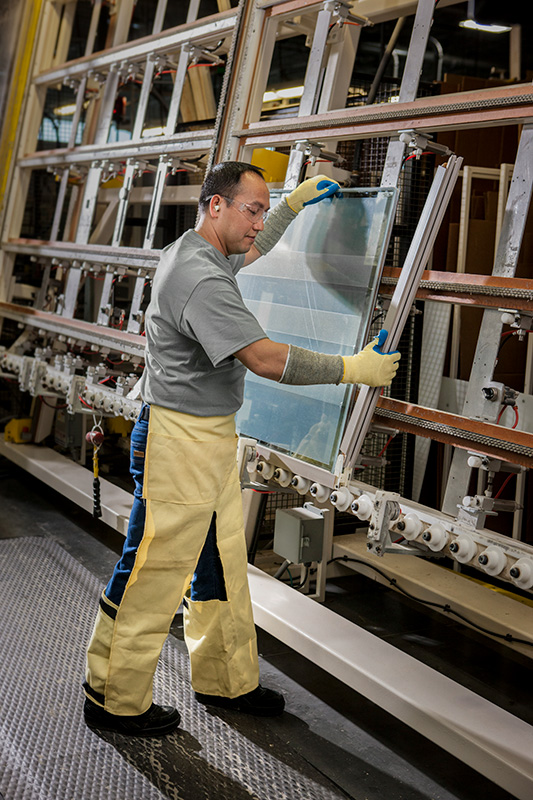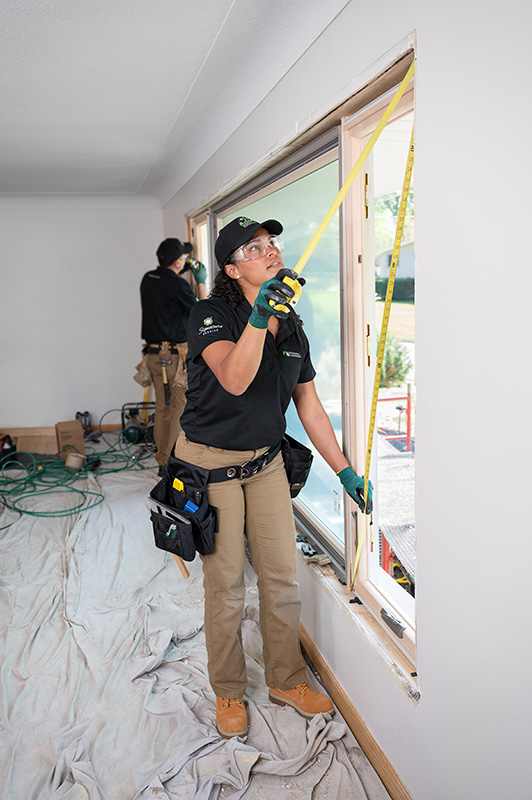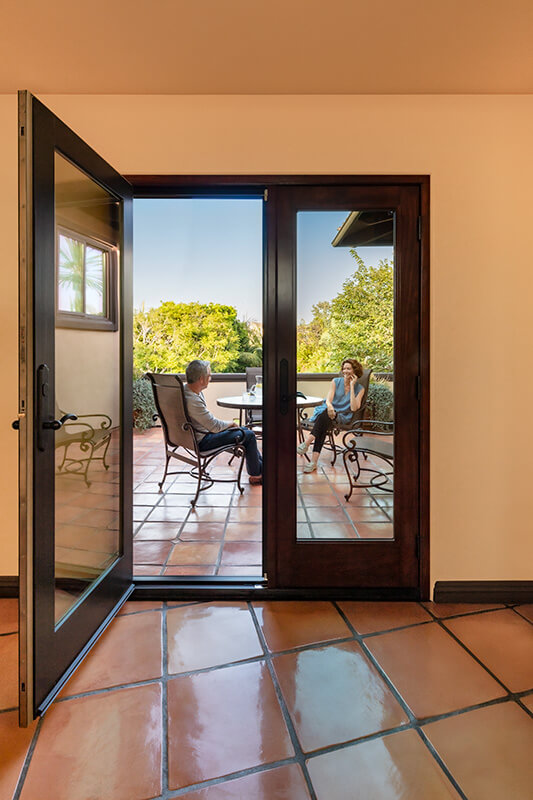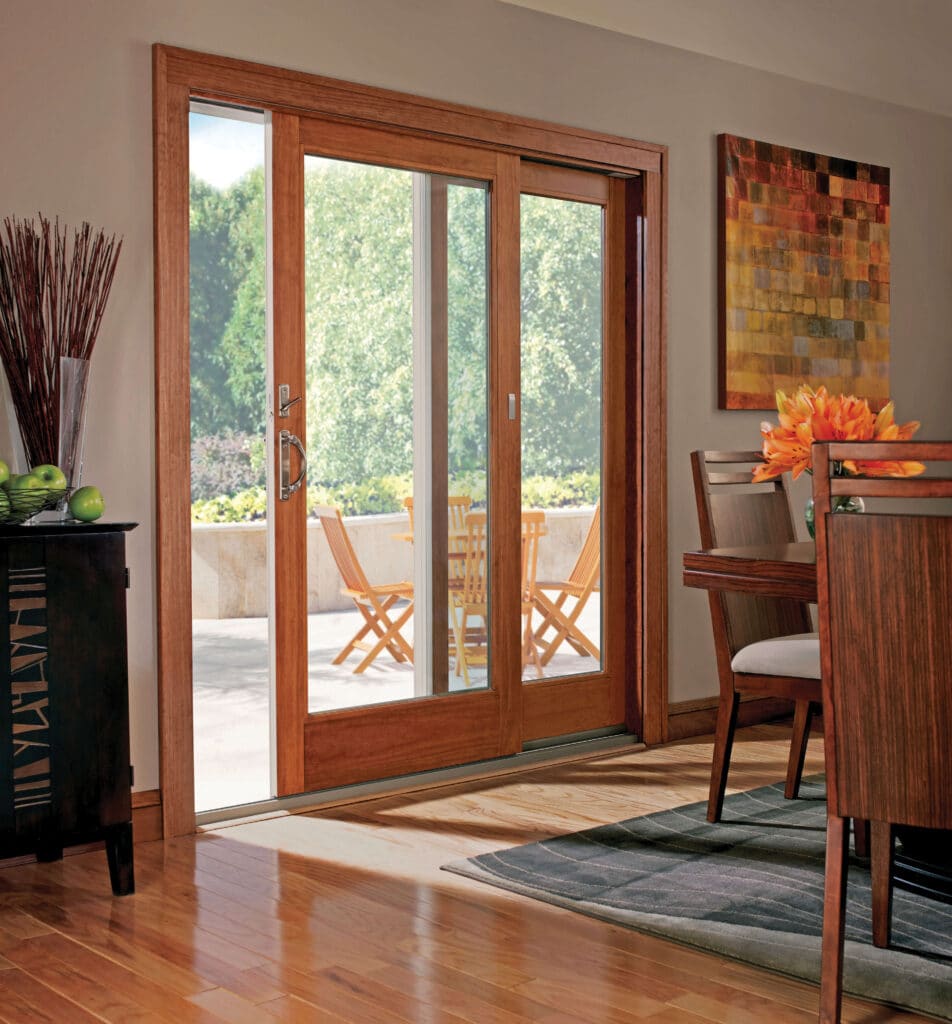
About Our Doors
Elevate your space and seamlessly connect with nature through Renewal by Andersen's selection of Andersen® patio doors. These stunning exterior doors come in various styles, including traditional French doors and sliding patio doors, and can be personalized with a range of hardware options, grille patterns, and interior stains.
Whether you desire a contemporary sliding glass door, a timeless hinged French-style door, or a unique design that reflects your individuality, Renewal by Andersen has the ideal solution to enhance your patio. Our products not only deliver exceptional aesthetics but also guarantee effortless operation and outstanding performance.
Renewal by Andersen patio doors are meticulously crafted to suit your lifestyle and offer the following features:
- Climate-neutral performance: Our doors are designed to withstand even the harshest weather conditions, providing easy operation and durability regardless of the climate you reside in.
- Energy-efficient design: With continuous weatherstripping and interlocking features, our doors effectively seal out drafts, ensuring energy savings and a comfortable indoor environment.
- Solid, secure construction: Multiple locking points deliver enhanced security, offering you peace of mind and protecting your home and loved ones.
Our team of experienced design consultants is dedicated to understanding your unique design needs. Whether it's through in-home consultations or convenient no-contact virtual meetings, we take the time to listen and create a personalized plan to enhance your home.
With precision and attention to detail, our project technicians ensure accurate measurements and address any final questions you may have. Once the measurements are finalized, we proceed with manufacturing your fully customized windows, tailored to your specifications.
We believe in treating your home with the utmost care and respect. Our professional installers approach every installation as if it were their own home. They handle the process meticulously, ensuring a seamless fit and finish. And don't worry – we clean up after ourselves, leaving your home just as we found it.
Our products are backed with a robust limited warranty. Our commitment extends beyond installation. We're dedicated to making sure your windows function as expected and that you have peace of mind in your investment. Count on us for exceptional customer care.
